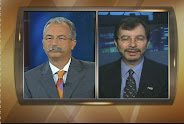Rules Matter.
If the NFL changes its rules of play, does that not have an effect on the game? So, why would a rule change by the FASB or the SEC or a law by Congress not have the same game changing effect?
When the FASB said that illiquid and opaque assets should be valued at their last sale (or whatever could be approximated as such), were they cognizant of the impact it would have on financial institutions with their capital requirements?
When the SEC eliminated the uptick rule and looked the other way on naked short selling, were they cognizant of the impact it would have in facilitating the bear raids from short sellers? And were they aware that such bear raids would virtually take off the table any capital raising options via an equity sale for financial stressed institutions?
When Congress let the financial innovation genie out of the bottle via various laws (mostly in the area of deregulation) and lax oversight, were they cognizant of the impact it would have on the financial engineers on Wall Street?
The answer to all of the above is apparently not.
Let me clear – the problems of excess amounts of leverage, animal spirits, and bad business decision-making are at the core of the credit crisis. There is no doubt that this is where the blame must lie. Be it no-doc, no-income mortgages, or homes purchased with the intent of flipping them in six months, or credit cards to teenagers in high school, or junk bonds with very generous covenants, the list is very, very long. However, the circumstances produced by such bad behavior are not the only culprits. For when coupled with virtually no oversight and the above noted rule, legislative, and regulatory changes, the bubbles that were blown are what the financial system is now struggling to unwind. Which brings us right to the single most important aspect of the crisis – will the unwinding of the excess amounts of leverage (the deleveraging process) be an orderly or disorderly one?
If left unchanged, the answer is what you see on your screens everyday. Firemen Hank and Ben rushing about to put out one financial wildfire after another.
But it need not be this way.
No doubt, there are many ways to achieve the same end result – a more orderly transition of the deleveraging process – but we’ve got to get beyond the reactive mode and become more proactive to begin to move from chaos to sanity. So, let me humbly offer a few immediate solutions to the credit crisis:
1 - Modify FAS 157
Change the rule from the insanely destructive and academically illogical mark-to-market to mark-to-moving average. By shifting the “fair value” reading from the last sale to the average of the past six months, you will get the closest thing to a reasonable compromise between the market fundamentalist ideologues (with their quaint notion that markets are always efficient) and the realists who know that in the short term investors can be anything but rational, especially when it involves illiquid, opaque assets.
2 – Require more transparency in illiquid assets
The FASB’s recent rule change for FAS 133 appears to be one such solid step in the right direction. More needs to be done.
3 – Begin the process of creating standards for derivatives
Financial innovation is not going away. And when conducting properly, financial innovation can be a very positive force for the real economy. However, when so much is constructed in the dark, in times of stress it becomes impossible to determine where the bodies are buried.
4 – Restore the uptick rule
Since the SEC has finally woken up and instituted sanity into the naked short selling arena, they now need to revisit their laissez-faire, market fundamentalist ideology and restore the uptick rule. By doing so, it will significantly reduce the incentive for the pre-Depression era bear raids that are wrecking such havoc.
5 – Move with a sense of urgency
I began this commentary with a reference to football, so let me return to that metaphor.
In a football game, there often comes a point where time is of the essence. And those teams that are prepared for such times act with clarity and a strong sense of urgency. They may not always succeed but the process is the correct one. The current crisis requires such a sense of urgency. If left unchecked, however, the bear forces at work will continue their bear raids (on equity and debt) until the threat to the system becomes more than it can withstand. Frankly, financial Armageddon is not too strong of a phrase.
Investment Strategy Implications
The impact on the economy has now become so significant that lives are being impacted, most dramatically within the companies that are being driven out of business or into the arms of the US Government and for why? Because rule changes have altered the game.
The laissez-faire, market fundamentalism Reagan doctrine is dead. Over. Finished. Kaput. In its place will be a return to the regulatory and oversight environment that preceded it. The danger is if the pendulum swings too far the other way and restrictions are imposed that severely limits the US’s ability to compete. Given the populist rant of the two presidential candidates, such a move to overregulation is not out of the question.
As I noted yesterday and Mr. El-Erian stated in his interview, transitions can be very messy. Let’s hope that some degree of clear thinking will produce the kind of results needed.
 A bailout by any other name would smell just a foul. Or would it?
A bailout by any other name would smell just a foul. Or would it?


































